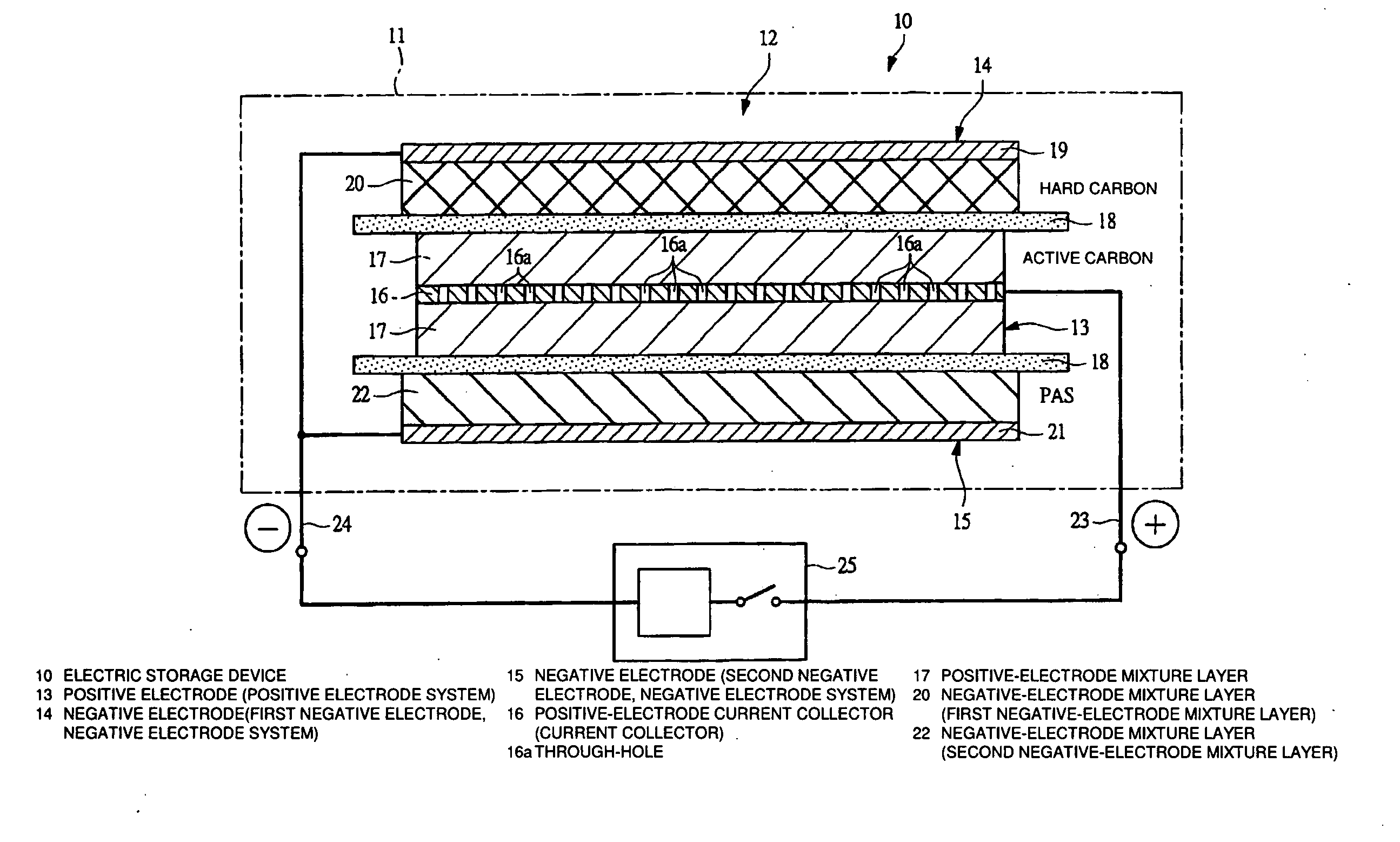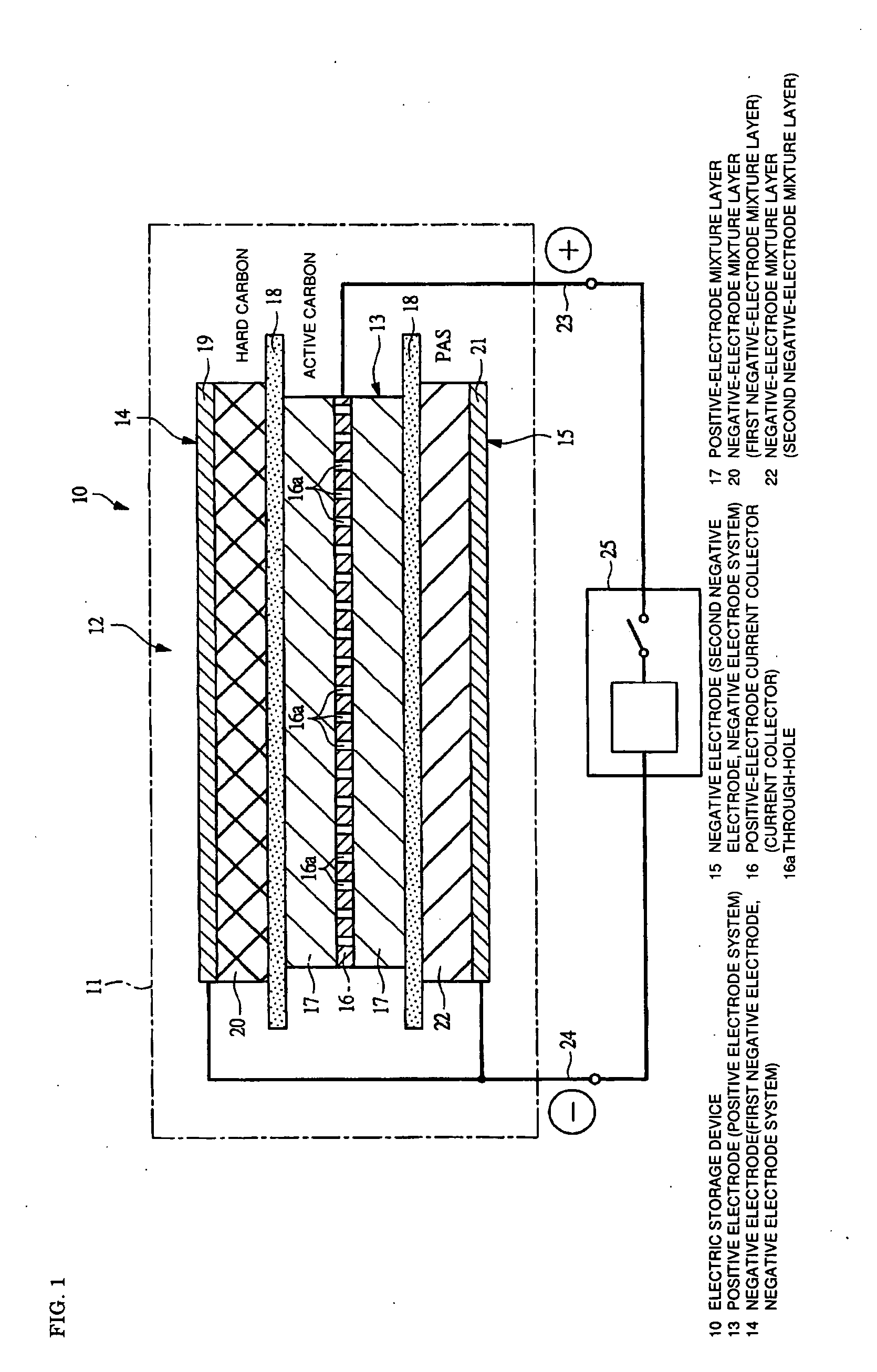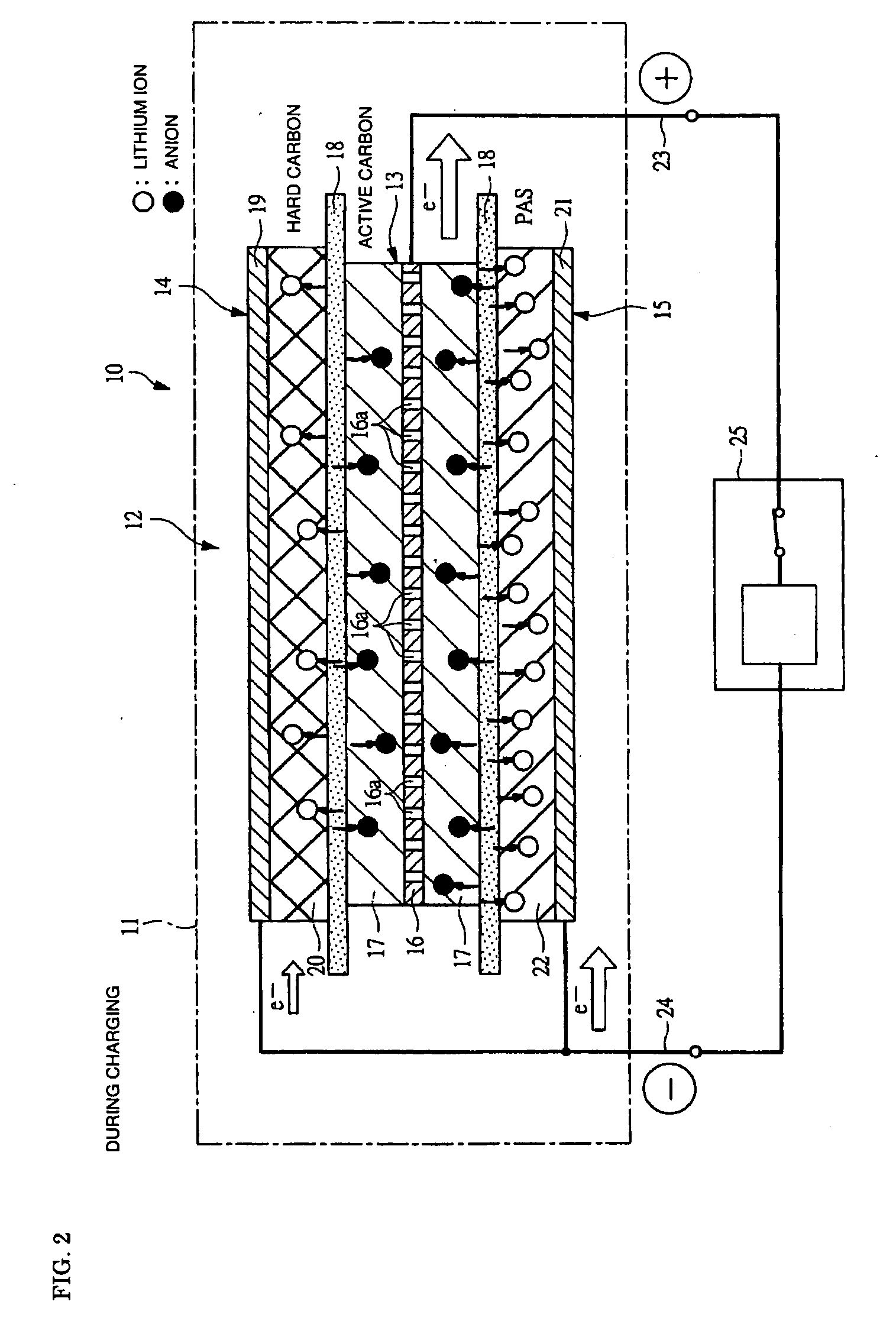Electric storage device
a technology of electric storage device and secondary battery, which is applied in the direction of cell components, sustainable manufacturing/processing, secondary cell details, etc., can solve the problems of reduced energy and difficulty in assembly, so as to ensure the durability of electric storage device and enhance energy density and output density of electric storage device.
- Summary
- Abstract
- Description
- Claims
- Application Information
AI Technical Summary
Benefits of technology
Problems solved by technology
Method used
Image
Examples
example 1
[Fabrication of Negative Electrode 1]
[0066]A furfuryl alcohol, which was a raw material of a furan resin, was retained at 60° C. for 24 hours so as to cure the furfuryl alcohol, to thereby obtain a black resin. The obtained black resin was put into a stationary electric furnace, and heat-treated for 3 hours under a nitrogen atmosphere till the temperature reached 1200° C. The black resin was retained at 1200° C. for 2 hours. The sample taken out after the cooling was pulverized by means of a ball mill to obtain a hard carbon powder (D50=5.0 μm, hydrogen atom / carbon atom=0.008) as a sample 1.
[0067]Then, 86 parts by weight of the sample 1, 6 parts by weight of acetylene black powder, 5 parts by weight of acrylic resin binder, 3 parts by weight of carboxylmethyl cellulose, and 200 parts by weight of water were fully mixed to obtain a slurry 1 for a negative electrode. The slurry 1 for a negative electrode was uniformly applied onto both surfaces of an expanded metal made of copper in a...
example 2
Examination for Example 2
[0093]Like the cell 1 according to the Example 1, it was confirmed that the cell 4 according to the Example 2 had a high energy density and a high capacity retention ratio, since it had the negative electrode 3 including the negative-electrode mixture layer containing the hard carbon with a high capacity at one surface and the negative-electrode mixture layer containing the PAS with a low resistance on the other surface. When the cell 4 that was subject to the charge / discharge test performed 1000 times under a low temperature of −20° C. was disassembled, the deposition of the metal lithium was not recognized on the negative electrode 3 containing the hard carbon, which had a high resistance. Like the cell 1 according to the Example 1, when the cell 4 according to the Example 2 is charged, many lithium ions move to the negative-electrode mixture layer containing the PAS having a low resistance, and then, these lithium ions slowly move to the negative-electrod...
example 3
[Fabrication of Positive Electrode 2]
[0094]92 parts by weight of commercially available LiCoO2 powder, 4.5 parts by weight of graphite powder, and 3.5 parts by weight of polyvinylidene fluoride (PVdF) powder were mixed, and then, N-methyl pyrrolidone was added thereto. The resultant was thoroughly stirred and defoamed, where by a slurry 2 for a positive electrode was obtained. The slurry 2 for a positive electrode was uniformly applied over both surfaces of the positive-electrode current collector by means of a roll coater, and dried and pressed to produce a positive electrode 2 having a thickness of 169 μm.
[Fabrication of Electrode Laminate Unit 5]
[0095]The negative electrode 1 was cut out into six pieces, each having an area of 6.0 cm×7.5 cm (excluding the terminal welding parts), the negative electrode 2 was cut out into six pieces, each having an area of 6.0 cm×7.5 cm (excluding the terminal welding parts), and the positive electrode 2 was cut out into eleven pieces, each having...
PUM
| Property | Measurement | Unit |
|---|---|---|
| current | aaaaa | aaaaa |
| specific surface area | aaaaa | aaaaa |
| pore diameter | aaaaa | aaaaa |
Abstract
Description
Claims
Application Information
 Login to View More
Login to View More - R&D
- Intellectual Property
- Life Sciences
- Materials
- Tech Scout
- Unparalleled Data Quality
- Higher Quality Content
- 60% Fewer Hallucinations
Browse by: Latest US Patents, China's latest patents, Technical Efficacy Thesaurus, Application Domain, Technology Topic, Popular Technical Reports.
© 2025 PatSnap. All rights reserved.Legal|Privacy policy|Modern Slavery Act Transparency Statement|Sitemap|About US| Contact US: help@patsnap.com



